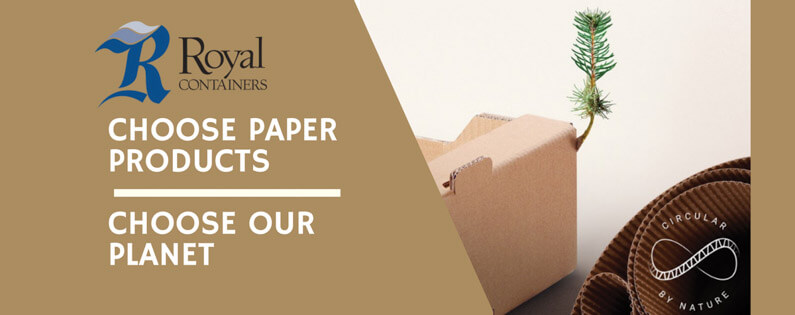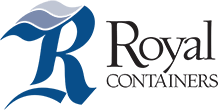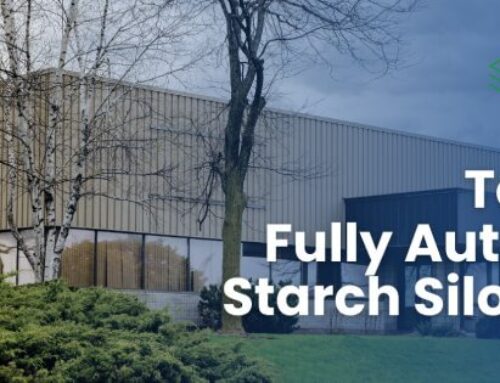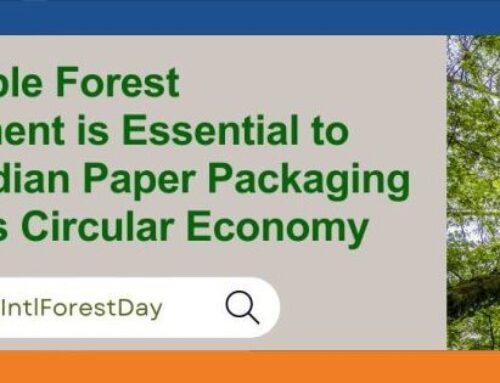Planet or Plastic? Royal Containers Chooses Paper

As recently illustrated and covered in the June issue of National Geographic magazine, the planet is increasingly confronted with the consequences of our disposable lifestyle, scientists are sounding the alarm. The planet is warming, our oceans are drowning in plastic and our climate patterns are changing.
However, there is some good news thanks to the sustainable practices embraced by paper and corrugated packaging manufacturers in Canada, like Royal Containers Ltd, and overseen by the industry’s governing body PPEC, the paper packaging industry’s environmental council.
Unlike most other packaging materials, paper is originally made from a renewable resource — trees, AND most corrugated packaging is 100% recycled. Plastics are produced from the waste products of oil refining. An analysis of the life cycle of plastic bags includes consideration of the environmental impacts associated with the extraction of oil, the separation of products in the refining process, and the manufacturing of plastics.
Paper packaging such as corrugated boxes are commonly used to carry heavier products such as appliances, electronic goods, fruit and vegetables and wine. They are frequently used as a bulk shipper, delivering many similar products in the same box. But, did you know that Royal Container’s corrugated boxes are made from 100% recycled materials? In addition, all PPEC-member mills producing corrugated box material have independent, third-party certification ensuring that their paper fibre sources (whether wood chips and sawmill residues or recycled fibres) are responsibly sourced.
Recycled content is central to the “Circular Economy” approach that Ontario and some other provinces say they want to adopt. John Mullinder, who heads up the PPEC, states that “almost all of the new boxes manufactured in Canada, are made from 100% recycled material that’s been collected from the back of factories or supermarkets or from curbside or depot programs.”
Virtually all Canadians now have access to the convenient recycling of corrugated boxes, paperboard or boxboard cartons, and kraft paper bags. The Canadian corrugated box industry relies heavily on those recycled materials to make new packaging its customers use to deliver their various products.
So, as we consider our future and that of the planet we live on, it’s vital to understand the need to focus on being better, learning more and looking beyond ourselves and the products, we consume. We need to commit to responsibility and actively investigate sustainable ways to protect and defend our precious environment and turning our backs on single-use plastic.
Eight Environmental Facts
- In 2002 a minke whale that washed up on a beach at Normandy was found to have 800 grams of plastic and other packaging in its stomach.
- Scientific research has shown that corrugated trays keep produce fresher for up to 3 days longer.
- If nothing is done to arrest the rate at which plastic is entering the oceans, our oceans will contain more plastic than fish by 2050.
- Corrugated cardboard boxes are one of the most environmentally-friendly packaging solutions on the market. For a start, they’re biodegradable and non-toxic. In addition, they’re usually made from old recycled cardboard (which is just as strong as new cardboard, don’t worry!)
- About 8 million tons of plastic become maritime garbage every year, according to scientifically grounded estimates.
- Only about 14% of the plastic used for wrapping food and bottling water is currently recycled and reused, and the numbers are going up all the time.
- Modular designed produce boxes help to minimize waste and protects fresh produce during transportation and storage.
- In 2002, Bangladesh banned plastic bags after drains blocked by bags contributed to widespread monsoon flooding in 1988 and 1998.





Leave A Comment